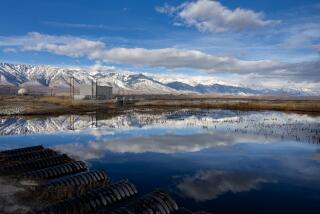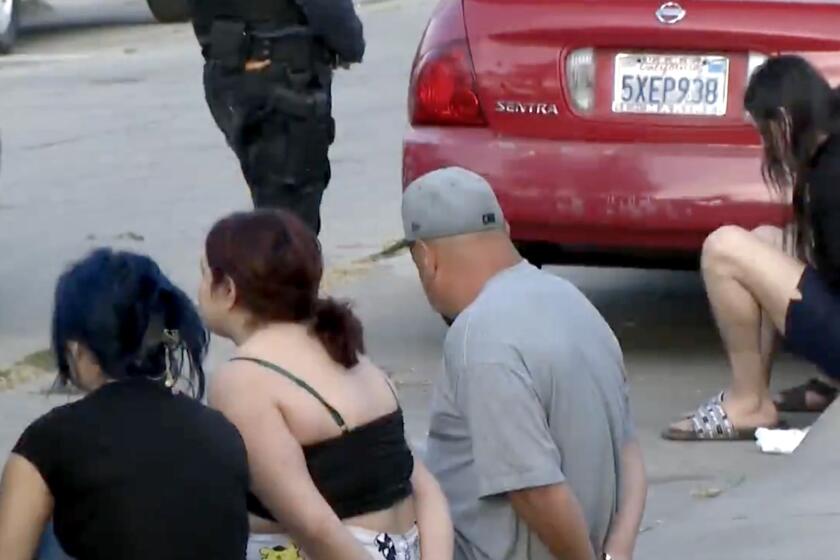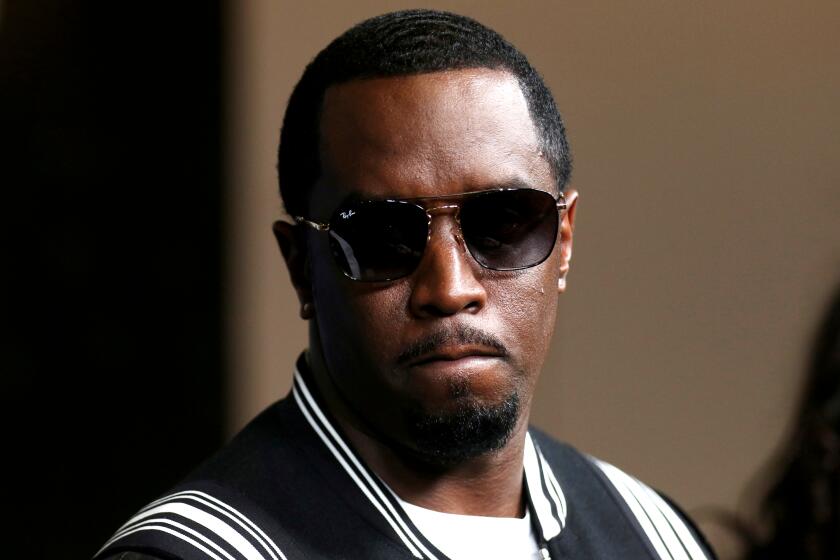Editorial: MWD’s water recycling plan is a good one, but don’t call it ‘toilet to tap’

Water in the preliminary stages of recycling at the West Basin Municipal Water District (WBMWD) water recycling facility in El Segundo, California on September 14.
Drought or no drought, and with or without the “Godzilla El Niño” predicted for the coming rainy season, it is increasingly obvious that from now on California must better manage its water, using it more carefully and then using it again. That makes the giant Metropolitan Water District’s plan to join the crowd of agencies investing in recycling, as The Times reported Wednesday, welcome news.
Los Angeles has lost two decades and countless billions of gallons of safe and clean drinking water because of demagoguery over a smart-water stewardship program that became known, quite inaccurately, as “toilet to tap.” Catchy phrase, but in this state no recycling program puts cleaned-up sewage directly into the water supply. State law forbids it.
Recycled water must first seep through the soil into aquifers, where it mingles with other groundwater. Then it’s pumped out again after undergoing the same natural filtration as any water drawn from the ground. That’s why in California, there is no toilet to tap. The city Department of Water and Power’s long-delayed San Fernando Valley projects, now back on track, are not toilet to tap. The MWD’s proposed project is not toilet to tap.
But perhaps it ought to be — or rather, perhaps the route of wastewater to treatment and reuse ought to be less convoluted. Pumping the water into the ground and then out again is costly and energy intensive, and steadily advancing technology may allow the MWD to purify water cheaply and efficiently on the surface. Sending clean water first into aquifers makes sense when it needs to be stored for later use, as will usually be the case. Otherwise, the step may be geared more toward psychological need — getting past the “Yuck!” factor — than anything else.
Among the many popular myths about water use in California is the belief that our taps currently release crystal clear snowmelt that flowed untreated from Sierra mountainsides. In fact, imported MWD water from the Feather River, stored in dams and then brought to Los Angeles by the California Aqueduct, has to be carefully cleansed of noxious salts, sediments and agricultural and urban runoff before it is ready for human use.
And costly imported water has long been supplemented — safely and without controversy — by supplies from the Water Replenishment District of Southern California, which settles cleansed local sewage into groundwater basins and pumps it out again for our taps.
Ensuring high water quality is serious business and requires ongoing work. So does ensuring our water supply. As for the yuck factor, let’s get over it. And as for the MWD proposal, let’s get on with it.
Follow the Opinion section on Twitter @latimesopinion and Facebook
More to Read
A cure for the common opinion
Get thought-provoking perspectives with our weekly newsletter.
You may occasionally receive promotional content from the Los Angeles Times.










